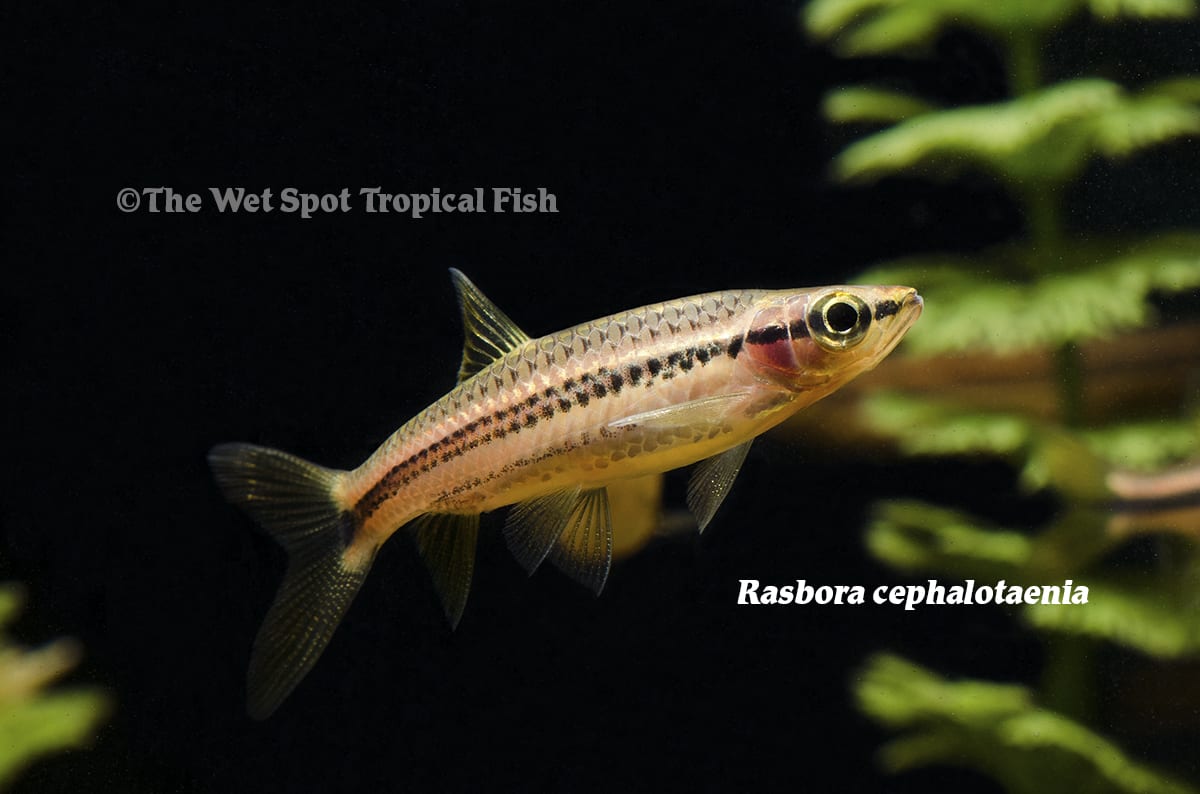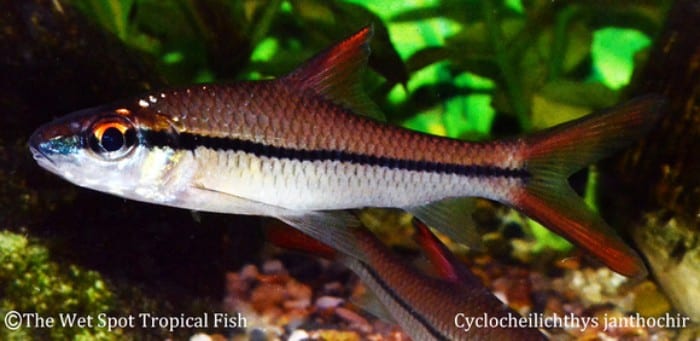Feel the Peat
Feel the Peat
With a prehistoric past of human underpopulation, Southeast Asia includes some of the most naturally preserved regions of the world. Without the heavy hand of human influence, tropical fish we have only just discovered, arose with beautiful and unique attributes that make them perfect tenants for the serious aquarists among us. Tropical climate, pristine beaches, amazing food, and cheap travel, however, has made this region a renowned tourist destination, which inevitably has its effects on the backwater peat forests and swamps these swimming creatures depend upon. Hard to find, and available now, are some of our favorite southeast asian beauties including Barbucca diabolica, Rasbora cephalotaenia, and Cyclocheilichthys janthochir.
Scientific NameBarbucca diabolica
Common NameScooter Loach
Temperature / pH68 to 77°F / 5.5 to 7.5 pH
Native LocationMalaysia
Preferred DietSmall invertebrates
Elusive and intriguingly alarming is B. diabolica. Species epithet inspired by their “diabolical” glowing red eyes and forked tails, these loaches have a unique way of getting around their environments. Also known as the “Scooter Loach”, their bellies are always in contact with solid substrate as they wriggle and climb (sometimes upside down), rather than swim to their desired locations. Reaching 2 inches in length, these loaches have long, dark bodies with tan banding, small heads, and stubby snouts. Found in small streams of Borneo and Peninsular Malaysia, Scooter Loaches are largely undescribed, and not much is known about their natural habitats. In captivity, they seem to do best in tanks with sand and gravel substrate, several water-worn rocks arranged with crevices and outcroppings, driftwood roots and tangles, mosses, and leaf litter. Somewhat diminutive in temperament, these loaches should be kept in groups of six or more in tanks with small, peaceful, schooling fish. Limited sampling indicates they consume small crustaceans and aquatic invertebrates, however, they happily consume varied diets of dried foods alongside live and frozen fare. Water conditions should be maintained with temperatures between 68 and 77°F, pH of 5.5 to 7.5, and hardness of 18-179 ppm.
Scientific NameRasbora cephalotaenia
Common NamePorthole Rasbora
Temperature / pH72 to 77°F / 5.0 to 7.5 pH
Native LocationMalaysia/Borneo
Preferred DietSmall invertebrates
Scientific NameCyclocheilichthys janthochir
Common NameRed Fin Bala Shark
Temperature / pH71 to 80°F / 4.0 to 7.0 pH
Native LocationBorneo
Preferred DietInvertebrates
Prowling the blackwater streams of provincial Borneo is the vicious “Red Fin Bala Shark”. Before the Jaws theme song gets stuck in your head, C. janthochir, is only vicious to aquatic and terrestrial invertebrates, which they chomp with their round mouths. Reaching a maximum of 7 inches in length at maturity, these cyprinids are silver-bodied with a thin black horizontal stripe from nose to caudal fin, bright red fins, and red eyes. Requiring similar tank setups to our previous spotlights, these swimmers are boisterous and gregarious, requiring ample space and tanks no smaller than 70”X18” at its base. A great community specimen, these fish should be kept in conspecific group of 6 or more alongside many other cyprinids, loaches, catfish, cichlids, and characins. As predators of invertebrates in nature, they should be fed regular meals of bloodworm, daphnia, artemia, chopped shrimp, alongside high quality flakes and granules for optimal expression of their beautiful red coloration. Tank waters should be maintained with temperatures of 71 to 80° F, pH between 4.0 and 7.0, and hardness of 18 to 179 ppm.
Not getting enough of Southeast Asia in your life from the Thai restaurant around the corner? Try spicing up your tanks with some of these rare and unique specimens. It may be the inspiration you need for future travels.


